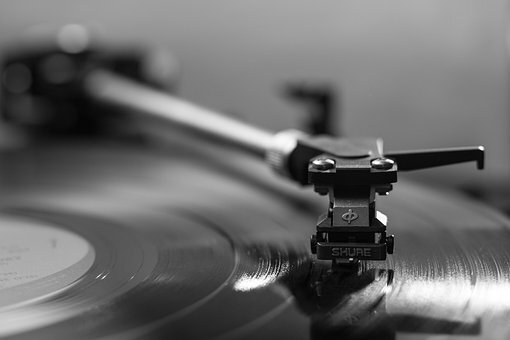The LP – Side One

Ever since the release in Japan of Billy Joel’s 52nd Street on October 1, 1982, the first commercially available compact disc (CD), vinyl records have been locked in an existential struggle. Digital formats might offer a cleaner listening experience, be more convenient to store, and well-nigh indestructible, but for many audiophiles a vinyl record feels more tangible and “alive” and is better at picking up the subtle nuances that are often lost or muddied in compressed digital recordings. For the romantic each hiss, crackle, and scratch on a vinyl record evokes a memory.
In a surprising but welcome turn of fortunes, the sales of vinyl in the UK in 2022 exceeded those of CDs for the first time since 1988, a revival fuelled in part because some major artists, such as Taylor Swift and Harry Styles, have deliberately chosen to record in that format. It is timely too as 2023 marks the seventy-fifth anniversary of the long-playing record (LP).
Inspired by some drawings of the human auditory system, French printer of scientific works, Edouard-Leon Scott, worked on a device designed to capture the human voice mechanically. He succeeded in 1853 by replacing the tympanum with an elastic membrane in the shape of a horn and the ossicle with a series of levers which moved a stylus backwards and forwards across a glass or paper surface blackened by smoke from an oil lamp.

Although Scott received a patent for his “phonautograph” on March 25, 1857, it was not a commercial success as the sound, rendered into a series of squiggles, could not be played back. It was not until 2008 when a team from Lawrence Berkeley National Laboratory succeeded in converting a phonautograph he had recorded on April 9, 1860, into a digital audio file that the true extent of his achievements was appreciated. Scott was heard singing, very slowly, a twenty-second snatch of Au clair de la Lune, predating Thomas Edison’s recording of Mary had a Little Lamb by some seventeen years.
Although Scott went to his grave convinced that Edison had wrested some of the glory that was rightfully his, the American inventor took the concept of voice recording forward by devising a system that played back sounds that had been recorded by transferring it to an embossing point and then, initially, on to paraffin paper and later a spinning cylinder wrapped in tin foil.
Scientific American, in its edition of December 22, 1877, reported that Edison had visited their office and “placed a little machine on our desk, turned a crank, and the machine enquired as to our health, asked how we liked the phonograph, informed us that it was very well, and bid us a cordial good night”. Edison’s patent (No 200,521), awarded on February 19, 1878, specified a particular method, embossing, for capturing sound on cylinders covered with tin foil. It was to prove to be his favourite invention.



